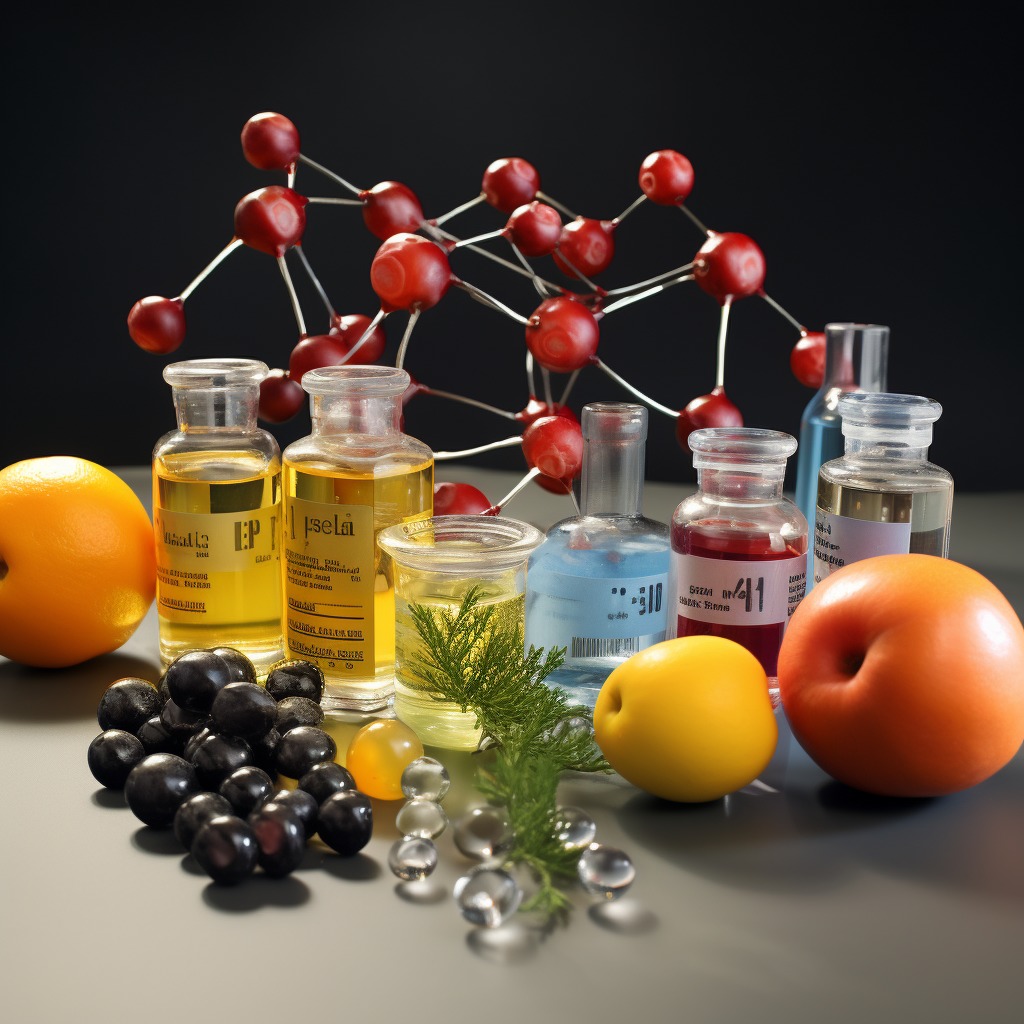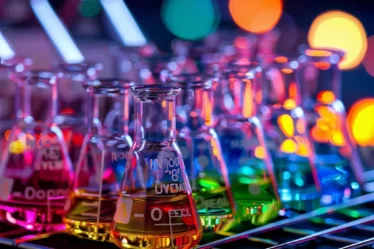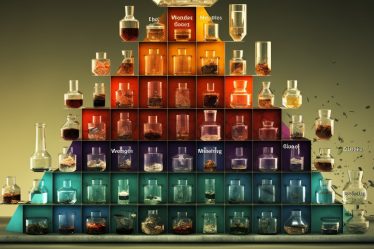
Organic chemistry is a fascinating branch of science that delves into the study of compounds primarily made up of carbon and hydrogen, often combined with nitrogen, oxygen, sulfur, phosphorus, halogens, and other elements. Organic chemistry and functional groups lay the foundation for understanding how molecules interact in living organisms and the materials we encounter daily.
Discover your ideal chemistry tutor at meet’n’learn and skyrocket your understanding to new heights!
Essentials of Organic Chemistry and the Role of Functional Groups
Functional groups are the cornerstone of organic chemistry. These specific groups of atoms within molecules determine the molecule’s characteristic properties, regardless of other atoms present. They play a pivotal role in dictating how a molecule will behave in different chemical reactions. For instance, the hydroxyl (-OH) group defines alcohols, and its presence can make a molecule polar and capable of forming hydrogen bonds.
How is a Hydrogen Bond Formed?
Understanding functional groups is essential for academic purposes and has practical implications. Every tutor and teacher would agree that from the synthesis of new drugs to the development of sustainable materials, the knowledge of functional groups and their reactivity is paramount.
Understanding Functional Groups in Organic Chemistry
In the vast world of organic chemistry, functional groups serve as a compass, guiding chemists through the myriad of reactions and properties of organic compounds. But what exactly are these groups, and why are they so crucial? A chemistry tutor explains:
Definition: A functional group is a specific group of atoms within an organic molecule that determines its characteristic chemical reactions. These groups are like the unique fingerprints of molecules, dictating their behavior and interactions with other compounds.
Struggling with biology topics? Explore our extensive collection of biology educational blog posts designed to simplify complex concepts for you. Whether it’s photosynthesis, the intricacies of green algae, understanding bacteria and viruses, or delving into the fascinating world of genetics and cells, our resources have got you covered. Expand your knowledge and enhance your learning journey with us today.
Practical Examples of Functional Groups
For instance, consider the hydroxyl group (-OH). When this group is present in a molecule, it typically classifies the compound as an alcohol. Due to the presence of the hydroxyl group, alcohols exhibit certain properties, such as polarity and the ability to form hydrogen bonds. Ethanol, commonly found in alcoholic beverages, is a prime example of this group.
What are Hydroxides?
Another example is the carbonyl group (C=O). This group can be found in both aldehydes and ketones. While both these compounds contain the carbonyl group, their properties, and reactions can differ based on the placement of the group and the atoms or groups attached to it.
Functional groups are not just limited to one per molecule. Many organic compounds, especially those in biological systems, contain multiple functional groups. For instance, amino acids, the building blocks of proteins, contain both amino (-NH2) and carboxyl (-COOH) groups.
Functional groups are the heart and soul of organic chemistry. Recognizing these groups and understanding their behavior is the key to unlocking the vast potential of organic compounds, from creating new pharmaceuticals to understanding biological processes at the molecular level.
As we explore further, we’ll delve into the various types of functional groups, their properties, and their significance in organic chemistry.
How to differentiate between Ionic and Covalent Bond?
Table of Functional Groups in Organic Chemistry
Our chemistry tutor prepared a concise overview of key functional groups in organic chemistry, their descriptions, and representative examples.
| Functional Group | Description | Example |
|---|---|---|
| Alkanes | Hydrocarbons with only single bonds between carbon atoms. | Methane (CH4) |
| Alkenes | Hydrocarbons with at least one carbon-carbon double bond. | Ethene (C2H4) |
| Alkynes | Hydrocarbons with at least one carbon-carbon triple bond. | Ethyne (C2H2) |
| Aromatics | Planar ring structures stabilized by delocalized π electrons. | Benzene (C6H6) |
| Haloalkanes | Alkanes where halogen atoms replace one or more hydrogen atoms. | Chloroform (CHCl3) |
| Alcohols | Compounds containing a hydroxyl (-OH) group. | Ethanol (C2H5OH) |
| Phenols | Compounds where a hydroxyl group is attached directly to an aromatic ring. | Phenol |
| Thiols | Compounds in the hydroxyl group contain a sulfur atom instead of oxygen. | Thiol |
| Ethers | Compounds where an oxygen atom is connected to two alkyl or aryl groups. | Diethyl ether |
| Sulfides | Sulfur analogs of ethers. | Sulfide |
| Amines | Derivatives of ammonia where alkyl or aryl groups replace one or more hydrogen atoms. | Amine |
| Carbonyl-based Groups | Compounds containing a carbon-oxygen double bond. | Aldehydes, Ketones |
| Nitriles | Compounds containing a carbon triple-bonded to nitrogen. | Nitrile |
Diverse Functional Groups and Their Significance in Organic Compounds
Organic molecules are diverse and complex, but the presence of specific functional groups can simplify our understanding of their behavior. Let’s delve into some of the most common functional groups and their characteristics:
Introduction to Redox Reactions.
Alkanes
Alkanes are saturated hydrocarbons characterized by single bonds between carbon atoms. They are the simplest type of organic compounds. An example is methane (CH4), a primary component of natural gas.
Alkenes and Alkynes
Alkenes have at least one carbon-carbon double bond, making them unsaturated. Ethene (C2H4), also known as ethylene, is a common alkene. Alkynes, on the other hand, contain a carbon-carbon triple bond. Ethyne (C2H2), commonly known as acetylene, is a typical alkyne used in welding.
Aromatics
Aromatic compounds contain a planar ring of atoms that are stabilized by a cloud of delocalized π electrons. Benzene (C6H6) is the most common aromatic compound and serves as a precursor for many industrial chemicals.
Haloalkanes
These are alkanes where one or more hydrogen atoms have been replaced by halogen atoms (F, Cl, Br, I). Chloroform (CHCl3) is a haloalkane that was historically used as an anesthetic.
Alcohols, Phenols, and Thiols
Alcohols contain a hydroxyl (-OH) group. Ethanol (C2H5OH) is a commonly known alcohol found in alcoholic beverages. Phenols have a hydroxyl group attached directly to an aromatic ring. Thiols are like alcohols but contain a sulfur atom instead of oxygen.
Ethanol and Alcohols in Chemistry explained.
Ethers and Sulfides
Ethers have an oxygen atom connected to two alkyl or aryl groups. Diethyl ether (C2H5OC2H5) is a common ether used as a solvent. Sulfides are the sulfur analogs of ethers.
How to calculate the Concentration of a Solution?
Amines
Amines are derivatives of ammonia (NH3) where one or more hydrogen atoms are replaced by alkyl or aryl groups. They play a vital role in biochemistry, forming the building blocks of proteins.
Carbonyl-based Functional Groups
This category includes aldehydes and ketones, both of which contain a carbon-oxygen double bond. Aldehydes have a carbonyl group at the end of a carbon chain, while ketones have it in the middle.
Nitriles
Nitriles contain a carbon triple-bonded to a nitrogen. They are often used in organic synthesis due to their reactivity.
Each functional group imparts specific properties to the organic molecule, influencing its reactivity, polarity, and interactions with other molecules. As we continue our journey through organic chemistry, understanding these groups will be paramount to grasping the intricacies of this vast field.
How Functional Groups Shape the Properties of Organic Molecules
The diversity of organic compounds arises from the myriad combinations of functional groups they can possess. These functional groups play a pivotal role in determining the physical and chemical properties of organic compounds. Let’s explore how:
How to calculate Molar Mass and Mass Fraction?
Reactivity
Functional groups are often the sites of chemical reactivity in organic molecules. For instance, the carbonyl group in aldehydes and ketones is highly reactive, making these compounds susceptible to numerous chemical reactions like nucleophilic addition.
Polarity and Solubility
Certain functional groups can impart polarity to a molecule. For example, the hydroxyl group in alcohols makes them polar, leading to higher solubility in water compared to hydrocarbons.
Boiling and Melting Points
Functional groups influence intermolecular forces, affecting boiling and melting points. Compounds with hydrogen bonding, like alcohols, typically have higher boiling points than those with just van der Waals forces, like alkanes.
Acidity and Basicity
Some functional groups can accept or donate protons, influencing the acidity or basicity of a molecule. Carboxylic acids, with their -COOH group, are acidic, while amines, with their -NH2 group, are basic.
Explore Acids, Bases and pH.
Odor and Taste
Functional groups can also influence the sensory properties of compounds. For instance, esters, with their characteristic RCOOR’ structure, are often responsible for the pleasant fragrances of fruits and flowers.
Functional groups are like the DNA of organic compounds, encoding the properties and behaviors that these compounds exhibit. A deep understanding of these groups is essential for anyone looking to master the intricacies of organic chemistry, be it in academia, research, or industry.
How is a Covalent Bond Formed?
Maximizing Chemistry Learning with the Help of Tutors
Chemistry, with its intricate concepts and myriad reactions, can be challenging for many students. While textbooks and lectures provide foundational knowledge, the role of tutors in enhancing understanding and fostering a love for the subject cannot be understated. Let’s delve into the significant impact tutors have on learning chemistry.
Importance of Personalized Learning
Every student has a unique learning style and pace. Tutors offer the advantage of personalized learning, tailoring their teaching methods to suit individual needs. Whether visual aids for visual learners or hands-on experiments for kinesthetic learners, tutors can adapt and provide targeted support.
Enhancing Understanding of Complex Topics
Topics like functional groups, stereochemistry, or reaction mechanisms can be daunting. Tutors can break these complex topics into digestible chunks using analogies, real-life examples, and interactive discussions. This deepens understanding and ensures that students grasp the underlying principles, not just rote memorization.
Building Confidence and Encouraging Curiosity
With regular feedback and one-on-one interactions, tutors help build students’ confidence. They encourage questions, fostering a sense of curiosity. This not only aids in understanding but also instills a passion for the subject. A tutor’s enthusiasm can be contagious, inspiring students to explore beyond the curriculum.
Looking for a chemistry tutor? Enter “chemistry tutor Glasgow” or “chemistry teacher Sheffield” on your preferred tutoring platform, such as meet’n’learn to find a teacher who can meet your specific needs.
If you thrive in group learning environments, search “chemistry classes London” or “chemistry lessons Manchester” online to discover local schools offering chemistry lessons.
What is Viscosity and How to Calculate It?
Final Thoughts on the Importance of Functional Groups
Organic chemistry, often dubbed the “chemistry of life,” is a vast and intricate field. At its core lie the functional groups, which dictate the behavior and properties of organic compounds. Functional groups play a pivotal role in shaping the world, from the fuels that power our vehicles to the medicines that heal us.
Understanding these groups is not just an academic exercise. It’s a gateway to innovation, allowing scientists and researchers to design new materials, develop novel drugs, and understand complex biological processes. Tutors and private teachers play an invaluable role in this journey, guiding students through the intricacies of the subject and igniting a passion for discovery.
Whether you’re a student, a teacher, a tutor, or simply someone curious about the world of chemistry, we hope this guide has provided valuable insights into the significance of functional groups in organic chemistry.
Discover your ideal chemistry tutor at meet’n’learn and skyrocket your understanding to new heights!
Answering Common Questions about Functional Groups in Chemistry
Chemistry, especially organic chemistry, often raises numerous questions among students. Here are some frequently asked questions about functional groups and their answers:
1. What is the difference between alkanes, alkenes, and alkynes?
Alkanes are hydrocarbons with only single bonds between carbon atoms. Alkenes contain at least one carbon-carbon double bond, while alkynes have at least one carbon-carbon triple bond. The type and number of bonds influence the molecule’s reactivity and properties.
2. How do functional groups affect the boiling and melting points of organic compounds?
Functional groups influence the type and strength of intermolecular forces in a compound. For instance, alcohols, with their hydroxyl groups, can form hydrogen bonds, leading to higher boiling points compared to hydrocarbons with similar molecular weights.
3. Why are some functional groups more reactive than others?
The reactivity of a functional group depends on its electronic structure and the presence of electron-donating or withdrawing groups. For example, the carbonyl group in aldehydes is more reactive than in ketones due to the presence of a hydrogen atom.
4. How are functional groups used in drug design?
Functional groups are pivotal in determining a drug’s reactivity, solubility, and interaction with biological targets. By modifying functional groups, chemists can optimize a drug’s efficacy and reduce side effects.


